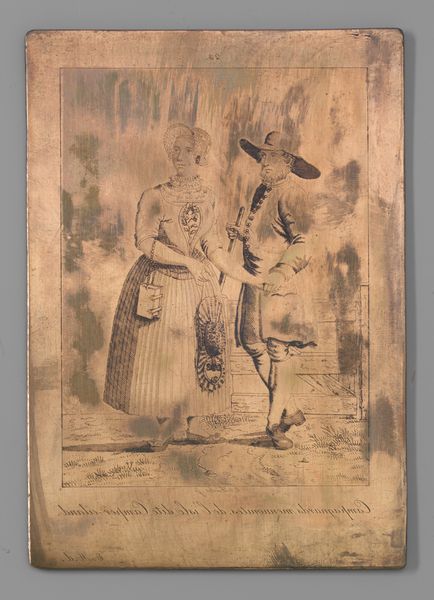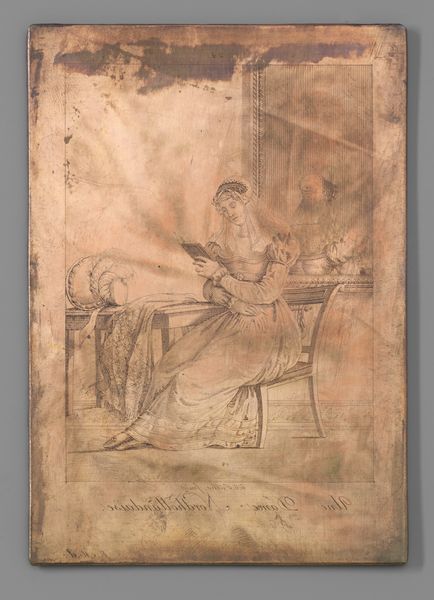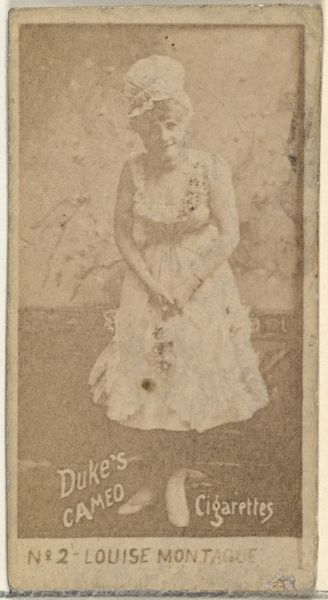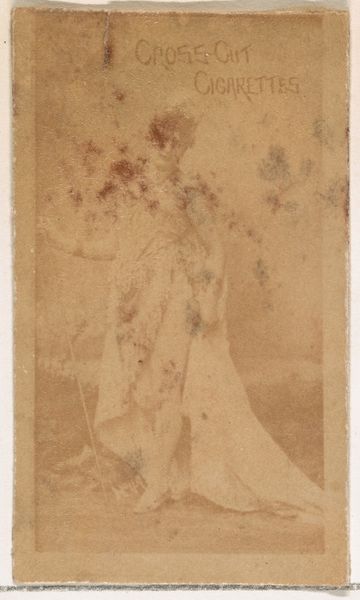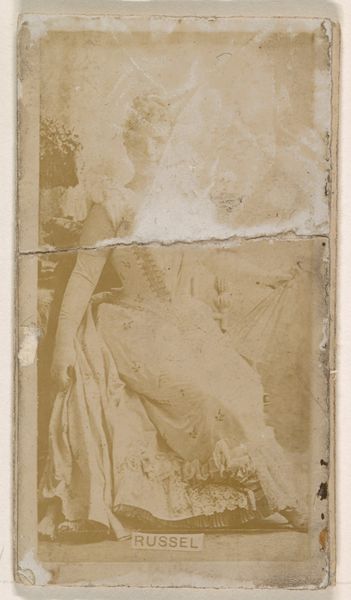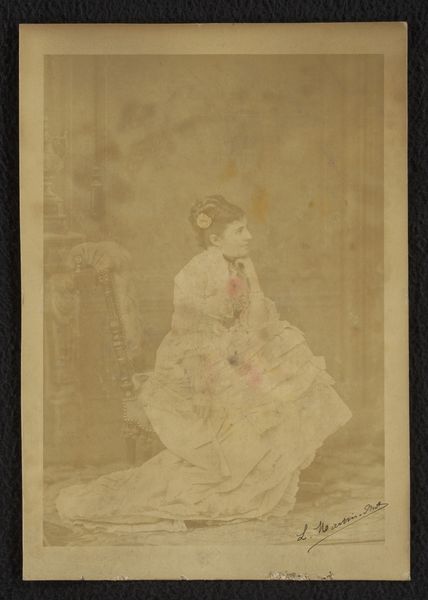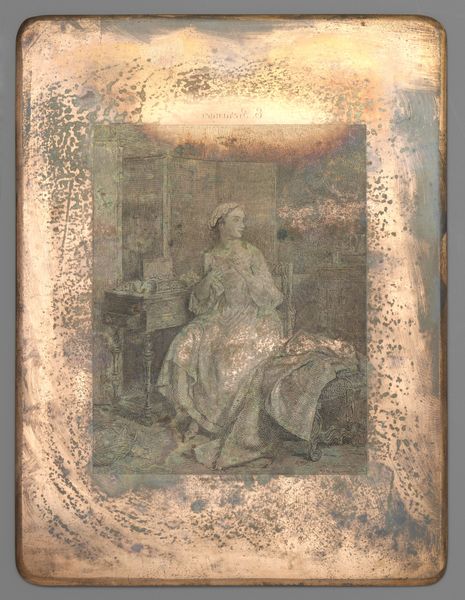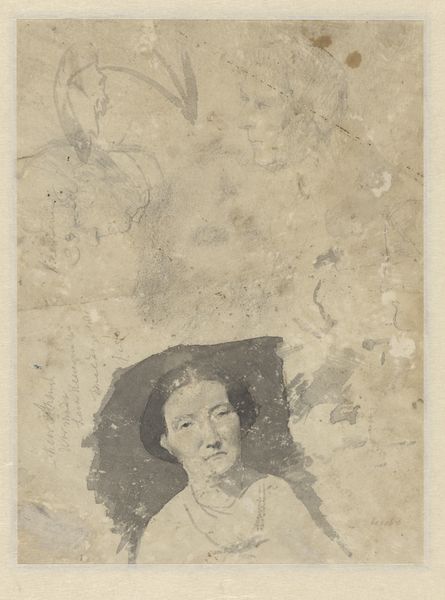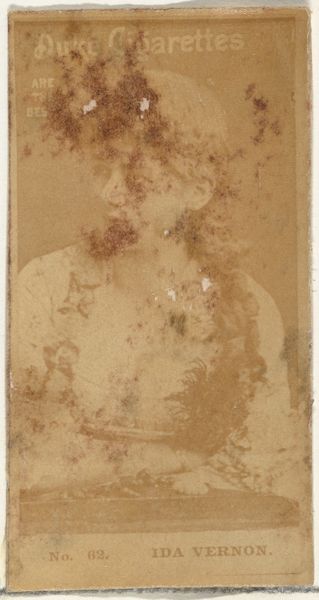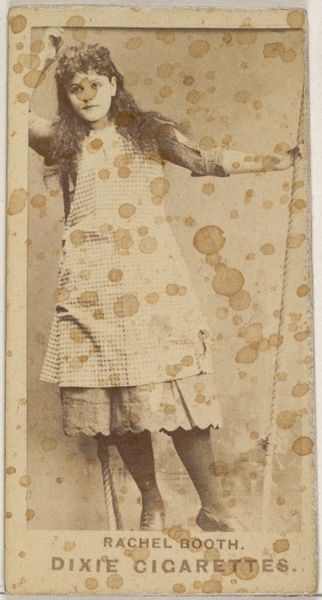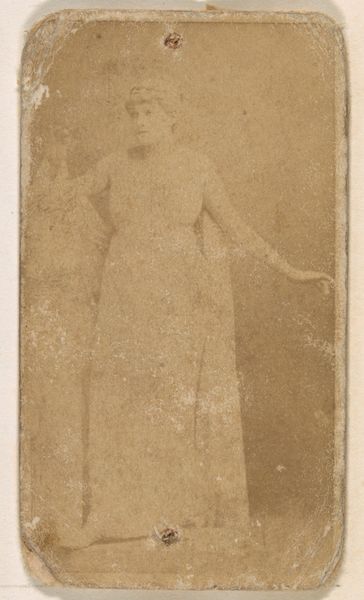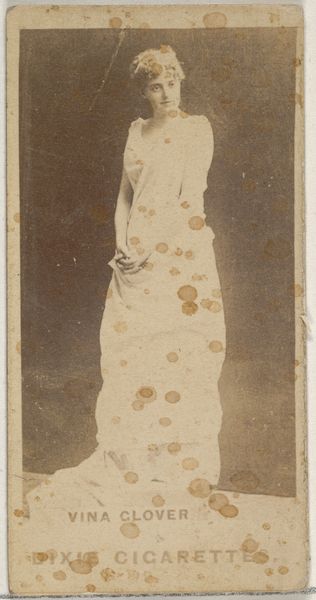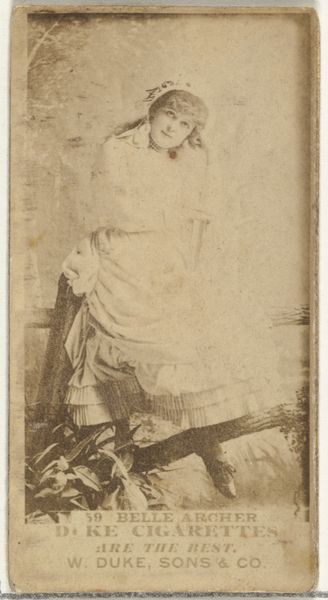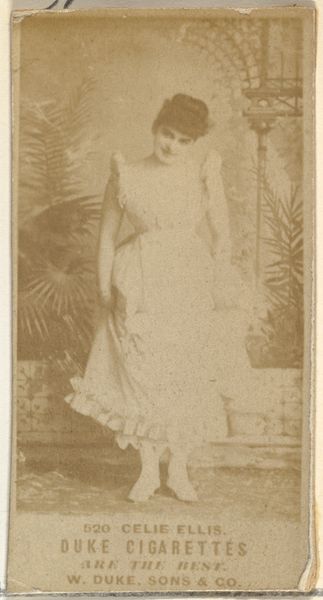
drawing, pencil
#
portrait
#
drawing
#
coloured pencil
#
romanticism
#
pencil
#
genre-painting
Dimensions: height 138 mm, width 96 mm
Copyright: Rijks Museum: Open Domain
Curator: Looking at "Frison Nordhollandais, et Jeunefille de Groningue," dating from 1802 to 1855 and currently residing in the Rijksmuseum, what strikes you first? Editor: There’s a spectral quality, almost ghostly. The image seems to emerge from the aged surface, particularly the figure in the background, lending a melancholic air to the whole scene. Curator: Indeed. Knowing that it is rendered using pencil and colored pencil adds a layer of intrigue. Consider the artist's choice to portray these regional identities—a Frisian woman and a young woman from Groningen. What might this pairing signify in terms of social dynamics or representation at the time? Editor: Visually, the textures created through layering of pencil strokes give form and volume, a sort of trompe l’oeil effect despite its relative simplicity. The floral patterns and lace details read as ornamental gestures that soften the overall impression. Curator: Perhaps these are deliberate aesthetic decisions to offset underlying complexities. The depiction of regional identities within a rapidly changing social and political context speaks volumes. These aren’t merely images; they are assertions of cultural heritage at a time of significant societal shift, particularly concerning women's roles. Editor: Absolutely. One might say that it’s the stark contrast of texture with an almost nonexistent color palette which invites us to find nuances in the romantic depiction of ordinary people. Curator: Precisely, this piece opens up conversations about representation and identity politics in the early 19th century, underlining art’s vital role in both reflecting and shaping societal perceptions. Editor: It encourages us to look beyond simple depiction and think about how artistic elements intersect with deeper questions about who gets remembered and why.
Comments
No comments
Be the first to comment and join the conversation on the ultimate creative platform.
